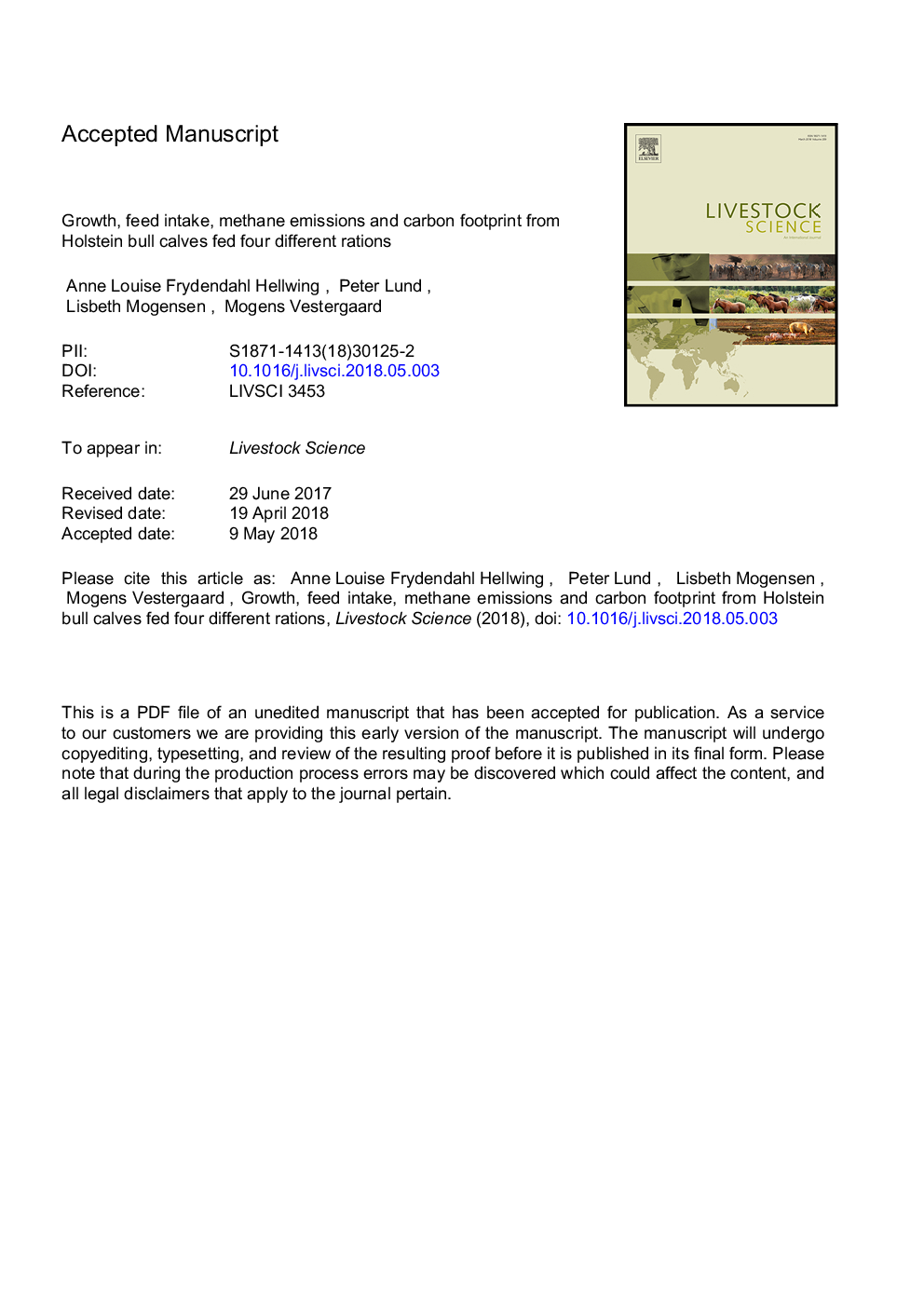| Article ID | Journal | Published Year | Pages | File Type |
|---|---|---|---|---|
| 8501885 | Livestock Science | 2018 | 48 Pages |
Abstract
There is a growing interest in finding feeding strategies that can decrease greenhouse gas emissions from the livestock sector. The aim of the study was to compare productivity, enteric methane emissions and carbon footprint per kg edible product of dairy bull calves fed one of four different rations. Twenty Danish Holstein bull calves were blocked in groups of four and within block randomly allocated to one of the four treatments at 5.8â¯Â±â¯0.5 (Meanâ¯Â±â¯standard deviation) month of age. The four treatments were: Control (CON) which was based on pelleted concentrate and straw; alternative 1 (MAIZE) which was based on maize cob silage, barley and rapeseed and soya bean meal; alternative 2 (RYE) which was based on rye, grass-clover silage and dried distillers grains with solubles and alternative 3 (GRASS) which was based on grass-clover silage, barley and rapeseed meal. All rations were made as total mixed rations and fed ad libitum. The ration's starch concentration was 309, 342, 348 and 188â¯g per kg dry matter (DM) for CON, MAIZE, RYE and GRASS, respectively. Methane emissions were measured when the calves were 8.1â¯Â±â¯0.4 months of age by means of indirect calorimetry. Dry matter intake (DMI) was measured at group level during the whole experimental period, though on individual basis during methane measurements. The bull calves were weighed at the start and end of the experiment and five times in between. Carbon footprints per kg edible product were calculated, including the whole life cycle from birth to slaughter for the four different treatments. The DMI intake did not differ significantly between the four treatments during methane measurements. Methane emissions per kg DMI were highest for GRASS and lowest for CON (Pâ¯<â¯0.001). Methane emissions per kg carcass gain were 216, 225, 194 and 347â¯L for CON, MAIZE, RYE and GRASS, respectively (Pâ¯<â¯0.001). Carbon footprint per kg edible product (including contributions from changes in carbon (C) in soil) showed a relative low variation between treatments. Carbon footprint was lowest for CON and GRASS with 9.5 and 9.4â¯kg CO2 per kg edible product, respectively, and highest for MAIZE and RYE with 9.9 and 9.7â¯kg CO2 per kg edible product, respectively. The marked differences in enteric methane emissions between rations were to some degree levelled out when greenhouse gas emissions, including the whole production chain, was included.
Related Topics
Life Sciences
Agricultural and Biological Sciences
Animal Science and Zoology
Authors
Anne Louise Frydendahl Hellwing, Peter Lund, Lisbeth Mogensen, Mogens Vestergaard,
